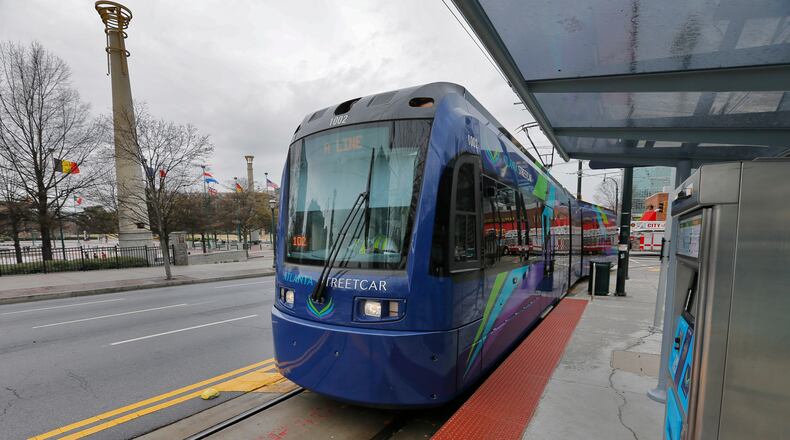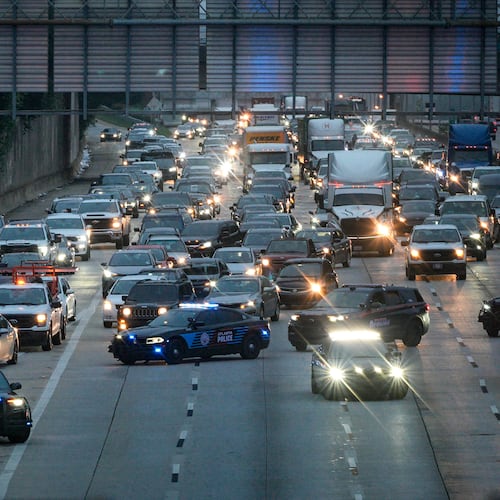I attended a fall 2016 public panel that included, among others, former MARTA CEO Keith Parker and former Atlanta mayor Kasim Reed. This fell on the eve of a City of Atlanta transportation vote that ultimately approved a half-penny sales tax increase for MARTA capital improvements and expansion.
Since then, Atlantans have seen grand visions of light rail from Lindbergh Center out to Emory and along sections of the BeltLine, and in a busy and bus-dependent section of Campbellton Road.
Insert the “how it started versus how it’s going” meme.
MARTA has been slowly rolling back those expectations in the last year, opting to revise some of these designs from light rail to bus rapid transit (BRT). Whereas current MARTA trains are high occupancy and high-speed heavy rail, light rail has less volume and velocity. But light rail still has its own designated lines and stops and is still very expensive.
Bus rapid transit involves buses that travel in their own lanes (ideally) and to designated stops that board even with platforms, improving accessibility.
The AJC’s David Wickert did a thorough recap of MARTA’s recent plan revisions and adjacent discussions with the Atlanta City Council. Basically, there is more than a billion dollar shortfall in this expansion project, and MARTA is having to prioritize completion of certain projects over others, while also changing the plans to more cost-effective ones.
MARTA argues that BRT can provide similar travel times for passengers, but at a fraction of the cost and construction time. The agency plans for BRT instead of light rail for the Emory, Campbellton, and Summerhill corridors. Out of a larger list of projects, these three projects —plus an Atlanta Streetcar expansion east to Ponce City Market, faster bus lines on Cleveland Avenue and Metropolitan Parkway, and reconstruction of some platforms at both the Five Points and Greenbriar MARTA rail stations — have been fast tracked ahead of some others. These are set for completion ... in 2028.
Enhanced local bus service, which has taken nearly half of the sales tax haul so far, has already been implemented.
So the timeline has gotten longer to improve trimmed-down projects on a smaller list.
But the reasoning is frugal and sensible, traits that should show themselves more often in governance. MARTA CEO Collie Greenwood faced a grilling from Atlanta leaders last week over the changes, but said that shifting priorities was necessary.
“The idea of spreading that peanut butter too thin and getting a little done in every area was not serving anyone,” Greenwood said, noting that all projects on the original list remain. They will just take longer.
The cost of construction has also risen dramatically in the six-plus years since the sales tax’s passage. Ridership dipped dramatically during the pandemic, and some work-from-home former riders still haven’t returned. That, of course, eats into revenue.
Some critics of MARTA’s revisions have accused the agency of shortchanging areas that serve people of color first, since the Summerhill and Campbellton lines were first to be changed. But since then, the Clifton-Emory corridor has now been downgraded to BRT, too, and the BeltLine rail project is delayed. So these accusations hold little water. All projects are getting a haircut.
What has happened with MARTA is a continuing pattern: Projects again take longer and cost more than expected.
Instead of spending itself into debt or overserving too many builds over a longer time, MARTA has opted for shrewd cost- and time-saving moves. But that certainly isn’t as sexy to Atlantans as the project list looked in 2018.
But no projects have been axed. Light rail is still a possibility along three BeltLine sections. BRT is set for North Avenue and Northside Drive and faster buses (or ART) are in line for Peachtree. Moores Mill is set to get a transit center, and the Vine City station is set for rehab. And, yes, the maligned Atlanta Streetcar is set for another westward expansion. But all of that is set for a 2035 completion, and a lot can change in the next 12 years.
Hopefully excitement will outweigh disappointment this time.
Doug Turnbull, the PM drive Skycopter anchor for Triple Team Traffic on 95.5 WSB, is the Gridlock Guy. Download the Triple Team Traffic Alerts App to hear reports from the WSB Traffic Team automatically when you drive near trouble spots. Contact him at Doug.Turnbull@cmg.com.
About the Author
The Latest
Featured


